Traveling with a baby can be an exciting adventure, but it also comes with its fair share of challenges, especially when it comes to ensuring your little one’s nutritional needs are met.
If your baby relies on cow milk, you might be wondering how to carry cow milk for baby while travelling, and above all : safely and conveniently while on the move.
In this guide, we’ll provide you with essential tips and tricks for carrying cow milk for your baby during your travels, so you can enjoy a worry-free journey without compromising your baby’s well-being.
Choose the Right Storage Containers
When it comes to carrying cow milk for your baby while traveling, the choice of storage containers plays a crucial role.
Opt for BPA-free, leak-proof bottles or containers that are specifically designed for baby food storage.
These containers are not only safe for your baby but also prevent spills and leaks, ensuring that the milk remains fresh and uncontaminated.
Pre-Portion the Milk
Pre-portioning the cow milk into smaller quantities can save you a lot of hassle during your travels.
Instead of carrying a large container of milk, divide it into smaller servings using sterilized individual bottles.
This makes it easier to warm up the milk when needed and reduces the risk of wasting unused milk.
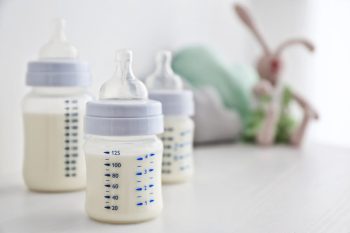
Insulated Cooler Bags
Investing in a high-quality insulated cooler bag can make a significant difference in maintaining the temperature of the cow milk.
Look for cooler bags with compartments that can hold ice packs or gel packs to keep the milk cool and safe from spoilage. This is especially important if you’re traveling during warm weather.
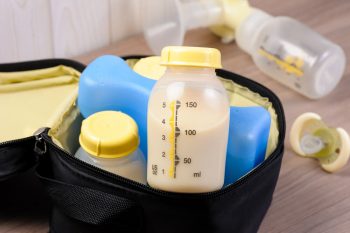
Use Ice Packs
Ice packs are your best friends when it comes to keeping cow milk fresh during travel.
Place frozen ice packs around the milk containers in the cooler bag to maintain a consistent temperature. This is especially crucial if you’re embarking on a longer journey.
Timing Is Key
If possible, time your travel around your baby’s feeding schedule. This can help you minimize the need to carry large quantities of milk.
Plan your departure shortly after a feeding session, and aim to reach your destination before the next feeding time.
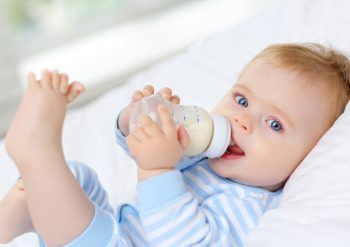
Research Baby-Friendly Stops
Before you hit the road, research your route for baby-friendly stops. Many rest areas have facilities that provide clean and private spaces for nursing or bottle feeding.
Knowing where you can comfortably feed your baby can make your journey smoother and more enjoyable.
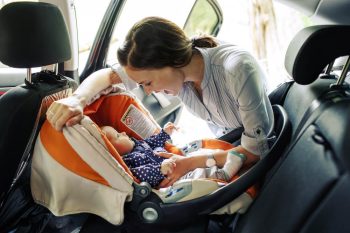
Pack Cleaning Supplies
Keeping your baby’s feeding equipment clean is essential for their health. Pack a small supply of baby-safe dish soap, a brush, and a drying rack.
This way, you can easily wash and sanitize the bottles and nipples during your travels.
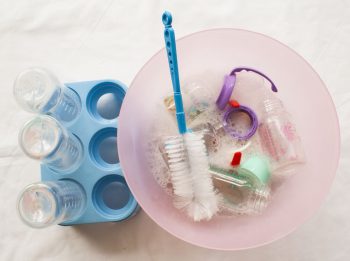
Bring a Thermos with Hot Water
If your baby prefers warm milk, consider bringing a thermos filled with hot water. You can use this hot water to warm up pre-portioned milk bottles when it’s time for your baby’s feeding.
Always test the temperature of the milk on your wrist before giving it to your baby to ensure it’s not too hot.
Check Airline Regulations
If you’re traveling by air, make sure to check the airline’s regulations regarding carrying cow milk on board.
Most airlines allow parents to carry a reasonable amount of baby food, including cow milk, for their infant.
However, it’s a good idea to familiarize yourself with the specific rules and requirements to avoid any surprises at the airport.
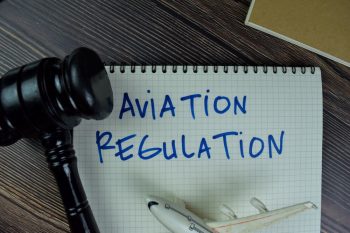
Stay Flexible and Prepared
While careful planning is essential, it’s also important to stay flexible and prepared for unexpected situations.
Babies can be unpredictable, and their needs might change during the journey. Always have extra milk, snacks, and baby essentials on hand in case of delays or other unforeseen circumstances.
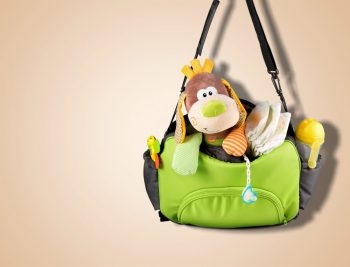
In conclusion, traveling with cow milk for your baby can be made easier with the right preparation and tools.
By selecting the right storage containers, using insulated cooler bags, and adhering to safety guidelines, you can ensure that your baby’s nutritional needs are met while enjoying a smooth and stress-free journey.
Remember, the key to successful travel with a baby is a combination of careful planning and a flexible attitude. Happy travels!


